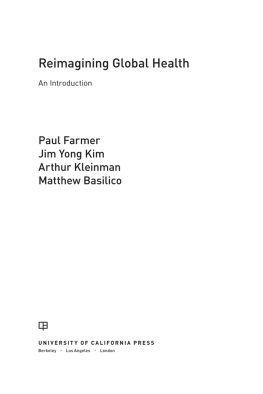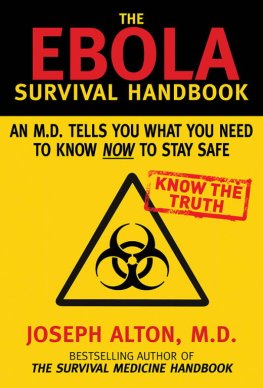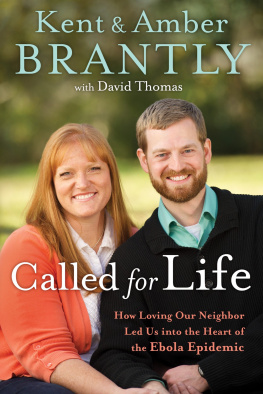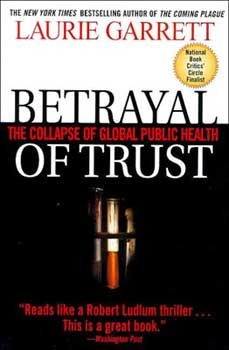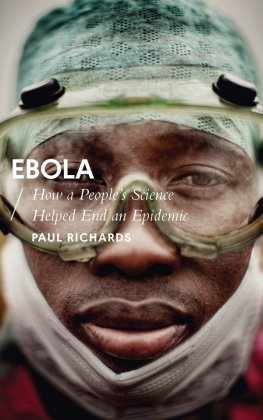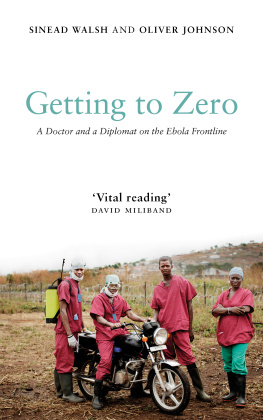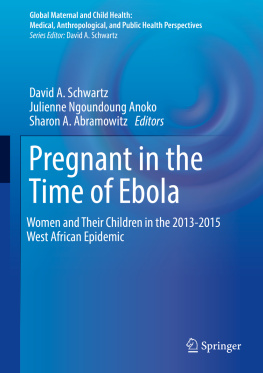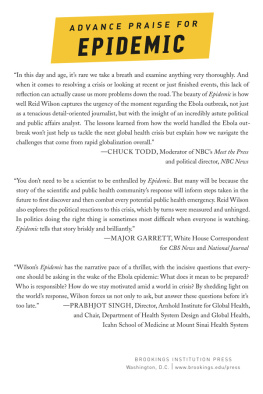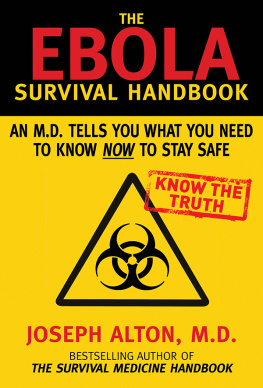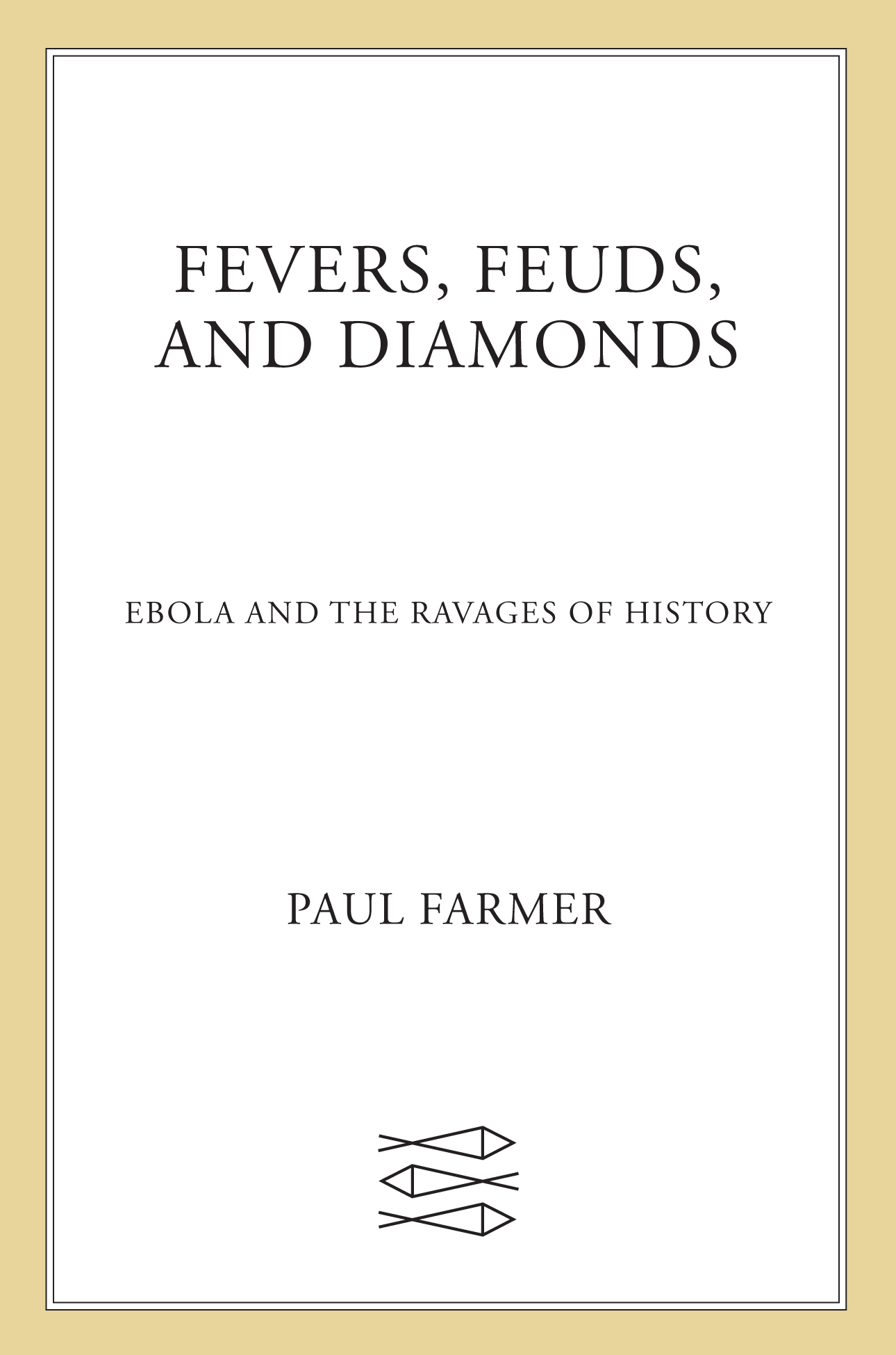The author and publisher have provided this e-book to you for your personal use only. You may not make this e-book publicly available in any way. Copyright infringement is against the law. If you believe the copy of this e-book you are reading infringes on the authors copyright, please notify the publisher at: us.macmillanusa.com/piracy.
To Humarr and Martin, who didnt make it; to Ibrahim and Yabom, who did; to all the caregivers; and to Ronda and Bill, who helped us join them
Theres a thread you follow. It goes among
things that change. But it doesnt change.
People wonder about what you are pursuing.
You have to explain about the thread.
But it is hard for others to see.
While you hold it you cant get lost.
or die; and you suffer and get old.
Nothing you do can stop times unfolding.
You dont ever let go of the thread.
In October 2014, having signed up to help respond to an explosive Ebola epidemic, I traveled to West Africa in the company of colleagues. The disease had spread from the eaves of a shrinking forest, where the eastern reaches of Sierra Leone, Liberia, and Guinea meet in a narrow firth of land. By the time we arrived, all three countries faced an increasingly urban epidemic with no end in sight. There are no hard borders, and for months the afflicted had crossed watery ones, or traversed frontiers along hidden paths, in search of care. It hadnt taken long for Ebola, hidden in human hosts, to reach capital cities on the Atlanticabout as far west as the virus could go without boarding a boat or a plane.
Across the region, many medical facilities had been shuttered by October. Thats because Ebola spreads easily in hospitals, clinics, and other places where the sick seek care; indeed, a significant fraction of the stricken had been health professionals, already in short supply when the virus struck. Its westward surge had just taken out the health-care systems of Liberia and Sierra Leone. Since then, those suffering from injuries or illnesses unrelated to Ebola were denied even the most basic medical services. This was a replay of the mortal drama of the previous decade, when civil war shut down or destroyed what clinics and hospitals there were in these countries. The forested region of Guinea, as its termed, was spared some of this violence, but had received hundreds of thousands of war refugees from its neighbors.
We knew little of this when we touched down in Monrovia, Liberias capital, in mid-October. A few days earlier, in Sierra Leone, wed been assigned to reopen several idle clinics and hospitals and were awaiting a similar assignment in Liberia. But we had yet to lay eyes on the interior of a functioning Ebola treatment unitan ETUmuch less provide medical care for a single victim of the disease. We couldnt have known what we were in for. Though many had been assigned to contain the outbreak, fewer had signed up for the messy and dangerous work of caring for, rather than quarantining or isolating, the already afflicted. In order to learn more about how to provide care without becoming casualties ourselves, three friends and I were invited to spend an afternoon in an ETU in Monrovia, just then overrun by Ebola.
The facility had been erected on the campus of a mission hospital, which earlier that summer had prepared for the viral assault on the city by converting its chapel into an Ebola ward. In short order, several working thereincluding a couple of missionarieshad themselves fallen ill. Much of the campus had since been overhauled by the worlds largest, and most Ebola-savvy, medical humanitarian organization. The ETU was by the time of our visit an impressive operation, with new open-air wards laid out under canvas awnings. These design features could not reduce the baking heat, which verged on intolerable for staff obliged to wear biohazard suits. I kept thinking, How on earth is it possible to last more than fifteen minutes here in protective gear?
Hazmat suits were only the most visible reminders of the ETUs sharp focus on infection control. The facility was divided into two zones, separated by flimsy waist-high orange mesh barriers: a red zone for patients confirmed to have Ebola and a green zone for patients deemed Ebola-free. Visitors were steered away from the barriers and instructed not to touch any surfaces, even on the safe side of the mesh. Having known a couple of the nurses and doctors whod fallen ill in previous weeks, the four of us welcomed the general climate of caution that prevailed within the unit. It wasnt long, however, before its basic premisethat the primary purpose of the ETU was isolation, rather than treatmentbegan to make the two of us who were clinicians feel uncomfortable. There was too little T in the ETU.
Our delegation broke into smaller groups shortly after the tour began. My doctor friend (an Italian infectious-disease specialist) and I stuck tight to our guide (also a compassionate and knowledgeable Italian physician). Both of us hoped our host might answer the questions we had about how best to care for the sickest subset of the Ebola-afflicted. Most of them were termed wet patients, because their gastrointestinal symptoms usually included vomiting and diarrhea. (Contrary to received wisdom, Ebolas clinical course is highly variable, with patients regularly reclassified as wet or dry during their illness.) These contaminated body fluids posed a great risk to those who had to clean up after the sick, but their loss posed an immediate threat to the afflicted: both fluids and electrolytes need to be replaced in order for patients to survive. Such replacement therapy, which is prescribed for pathologies ranging from gastroenteritis to gunshot wounds, has likely saved more lives than any other.
Replacement therapy requires estimating the volume of what comes out as liquid stool, vomit, urine, blood, and even sweat. In the United States, health professionals refer to whats replaced and lost as ins and outsIs and Os, for short. Nurses and nursing aides are usually the ones measuring losses in order to replace them, but doctors all learn the basics. There are several ways to replace fluids and electrolytes, including their infusion into the abdomen or even through the marrow of the bodys bigger bones. For almost a century, however, the most important methods of replacing the Os have been by mouth and by vein. The oral approach is preferred for all patients old enough and awake enough to drink whats called ORS, short for oral rehydration salts. You probably call it Pedialyte.
As any mother knows, even thirsty, dehydrated children dontor cantalways take ORS as instructed. Its not only small kids who have that problem: my friend and our host knew several professional caregivers stricken by Ebola whod been unable to keep down ORS. I had two of them on my mind that day, both of them doctors who had become wet patients. The first was a Sierra Leonean physician, a much-lauded researcher and colleague whom I admired greatly. Hed died on July 29 in an ETU that had been set up and run by the same group now hosting us in Monrovia. No one in that unit had charted the precise volume of his losses to diarrhea, vomiting, and fever, but Id heard theyd been substantial.
The second person on my mind that day was an American doctor whod fallen ill after he had taken over for my deceased friend. We knew a lot more about the Americans clinical course, as hed been airlifted to Atlanta and was still a patient there on the day we inspected the Monrovia unit. He had been about as sick as you can get, losing up to ten liters of fluid per day, but a colleague caring for him at Emory University Hospital had just let me know they thought hed make it. If he did, it would be in part because the team in Atlanta was carefully replacing the fluids and electrolytes he lost during the wet phase of the disease, which in some cases was accompanied by kidney failure. The doctor-patient had required renal dialysis, which permitted even more carefully calibrated replacement of his losses. Hed also required a breathing machine. In essence, these basic interventions allowed him to live long enough for his immune system to launch a counterassault on this virus.



